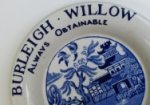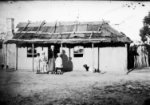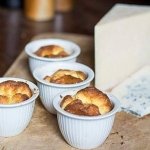This week at Elizabeth Bay House artisan cheese maker Kristen Allan hosted a workshop as part of our Colonial gastronomy series. Kristen is rather enamoured with the cellars under the house, which have their own unique environmental conditions which contribute to the cheese being made and stored there.
Domestic cheese making
Cheese making in its simplest form was an everyday practice in colonial kitchens, especially for households that kept their own ‘milch’ cow or goat. Fresh milk would spoil quickly without refrigeration, and fresh curd (yoghurt) and cottage or cream cheeses were enjoyed in their own right, and were useful for making cheesecakes. Indeed, many old cheesecake recipes instruct the cook to make the requisite curds as part of the cheesecake recipe, eg ‘take the curd from 3 quarts of milk, well drained’ or words to that effect.
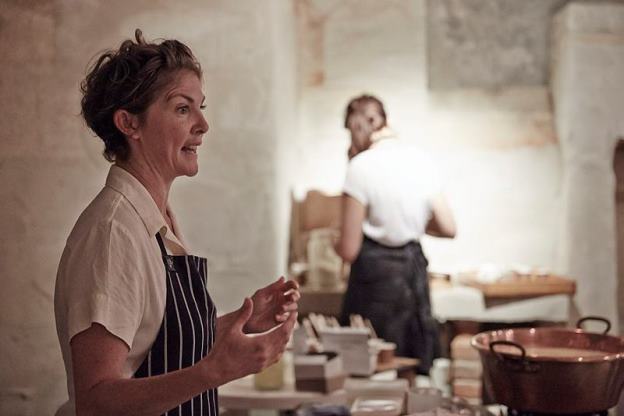
Kristen sharing her knowledge in the cellars at Elizabeth Bay House. Photo © Stuart Miller for Sydney Living Museums
DIY ricotta, or curds and whey
Making fresh cottage or ricotta style cheese is very easy (recipe below), requiring only fresh milk and cream, lemon juice or good quality white vinegar and some gentle heat. The acid curdles the warmed milk and the fat solids bind together to form curds, which separate from any water content, which in turn becomes whey. According to Kristen, bringing the milk very slowly to the boil is key to its success.
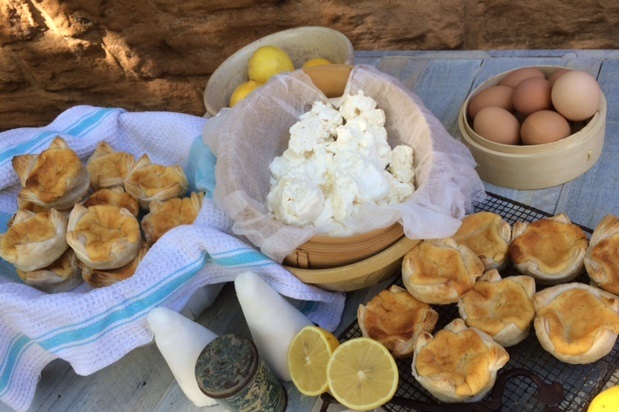
Fresh ricotta and cheesecakes. Photo Jacqui Newling © Sydney Living Museums
Don’t waste the whey
Whey is most commonly found these days in dried form, sold (not cheaply) in giant tubs as protein powder, a dietary supplement. Kristen gives several suggestions for home use however:
Use in baking instead of water – biscuits and bread.
Use to cook rice, quinoa and porridge or to soak grains or legumes.
Add to soups or stews for flavour.
Drink for digestion or for upset stomach.
Lacto-fermented vegetables – see Nourishing Traditions by Sally Fallon or www.westonaprice.org/food-features/lacto-fermentation.
Feed to chickens, dogs or pigs.
For homemade skincare:
Where the skincare recipe asks you to use water, use whey instead.
A whey bath: add 1–2 cups of whey to your water (strain whey first).
An age old craft
More complex aged cheeses require a little more skill and longer term nurturing, the work of a specialist dairyman or dairymaid in colonial times. They are generally made using using a live culture or rennet – traditionally derived from the stomach acids from an animal, but synthetic alternatives are now made for vegetarian cheese. Once the cultured milk is separated from its whey and put into a mould or form, they are left to dry out and mature, reacting to the air round them (hence Kristen’s fascination with the environment in the cellars) which influence the maturing process and the flavour and texture of the cheese. As the cheeses mature, the natural enzymes work to kill off dangerous bacteria, and can be stored longer than the fresh cottager cheeses.
These days most cheese is produced by large industrial companies, but fortunately for us, a few small scale artisan cheesemakers are keeping the traditional processes alive.
Kristen’s homestyle ricotta
Ingredients
- 2l full cream milk
- 100ml pouring cream
- 50ml lemon juice
- 1 teaspoon fine sea salt
Note
This is a method Kristen Allan recommends as a perfect foray into domestic cheesemaking. Ricotta is the easiest of cheeses to make in the home as it requires no specialised ingredients or equipment beyond a food-safe heat thermometer.
Directions
| Put enough cold water into a 5-litre pot to cover its base, about 1-cm deep. This will help prevent the milk from sticking or burning. Pour all the ingredients into the pot and stir. | |
| On a low heat, gradually bring the milk to the about 95°C. This should take about 1 hour. Try not to stir the mixture too much, but make sure it is not sticking to the bottom of the pot. At around 90°C, you should notice the milk starting to separate into curds and whey. If not, you will need to add an extra dash of lemon juice. Turn off the heat once the ricotta reaches 95°C and leave to settle for 10 minutes. | |
| Line a colander with muslin and place a bowl underneath to catch the whey. With a sieve or slotted spoon, gently scoop the curds into a colander. | |
| Drain for approximately 10 minutes or longer if you want a firmer ricotta for baking or drying. | |
| Transfer to a storage container or eat while still warm. | |
| Refrigerate and use within 7 days. | |
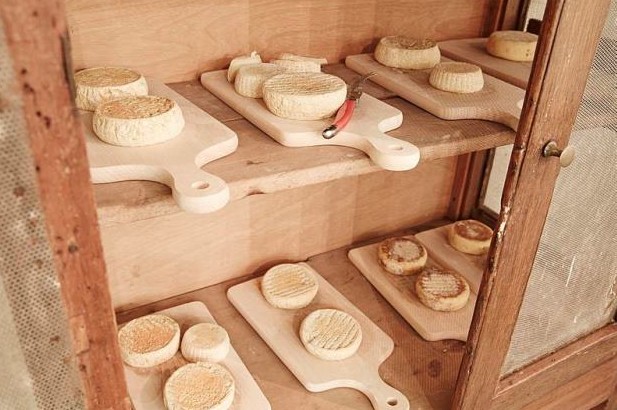
 Print recipe
Print recipe